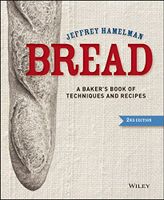Advertisement
Fats
Published 2004
Fats used in baking coat the gluten strands during mixing, making baked goods more tender. Cell structure in the baked products is more close-grained. The presence of fats also increases shelf life. Fats are derived from either animal or vegetable sources. Those produced from animal sources include butter and lard. Butter is of course the preeminent fat used in baking, and is unsurpassed for the aroma, rich color, delectable mouthfeel, and exceptional taste it provides. Solid at room temperature, butter melts at temperatures lower than body temperature, and this contributes to the smooth mouthfeel imparted to baked goods made with butter. Unsalted butter is always recommended. For one reason, it gives the baker thorough control of the amount of salt used in his or her formulas. Even more importantly, salt is used as a preservative in butter, and typically salted butter is older, often carrying off flavors. The perishable nature of unsalted butter makes it more expensive than salted butter, but the additional cost should in no way tempt the baker or cook to settle for inferior, salted butter. For those who prefer to eat less butter, my advice is not to alter properly proportioned formulas, but instead to have a thinner slice of the product.

